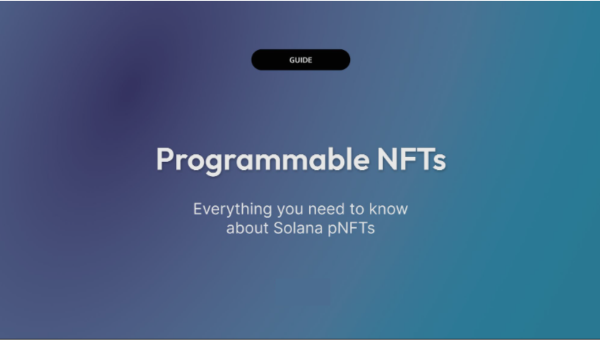What are programmable NFTs? Programmable NFTs is a new NFT standard with the concept of programmable NFTs on Solana’s network. So what’s special about Programmable NFTs, let’s find out with Weakhand in this article.
Before jumping into the article, everyone can refer to some of the following articles to better understand
- What are NFTs? All about NFTs
- What is NFT (Royalties fee)? The secret to helping Blur surpass OpenSea
- NFT Marketplace War and the ultimate winner
What are royalties?
NFT royalties are payments paid to creators each time their work is sold on the secondary market. Royalties can vary depending on each NFT collection, but a rate of 5-10% of the sale price is generally considered standard. For larger NFT collections, lower royalties of around 2.5% are common.
For example: An NFT collection has a 10% royalty fee on OpenSea and currently the floor price for the collection is 20 ETH. A user wants to sell 1 NFT from a collection at a floor price on the OpenSea marketplace. In addition to transaction fees, he must pay a royalty fee of: 20 * 10% = 2 ETH for each sale of his NFT.
Royalties provide a vital revenue stream for artists and creators across various blockchains, fueling creativity in the online space.
What Are Programmable NFTs (pNFTs)?
Royalties have become a hot topic of discussion in the Solana NFT community. Many groups have proposed different solutions to enforce royalties, but none have truly solved the problem.

What are programmable NFTs?
Metaplex recently introduced a new standard Programmable NFTs that allows creators to decide how their NFTs are used via allow/deny lists for certain users or wallets. The whitelist is a list of approved users who are allowed to buy, sell, or transfer pNFT. On the other hand, the deny list is a list of users who are banned from taking any action with pNFT.
This also ensures collections that want to enforce royalties can restrict their NFT owners from listing on royalty-free marketplaces allowing creators to receive a % of the revenue from the sale any future NFT works.
How Do Programmable NFTs Work?
The essence of Programmable NFTs is the ability to specify custom rules that must be met for every action performed on the NFT. Simply put, selling an NFT is not much different from moving from one wallet to another. Technically, when a user lists an NFT for sale on a marketplace, they transfer it to the marketplace’s wallet.
With the new pNFT standard, creators can only allow NFTs to be transferred to NFT Marketplaces that support royalties. If the rule is not met, the transfer will not be possible. This means that for the system to work, those NFT Marketplaces must also support Programmable NFTs.
Here are some platforms that are fully compatible with pNFT:
- MagicEden
- Hyperspace xyz
- Phantom
- Solflare_wallet
- xNFT_Backpack
- Tensors
- HadeSwap
- SharkyFi
- …..
In addition to automatic royalty enforcement, Programmable NFTs also have the potential to enhance the value of creative content in different ways. For example, pNFTs can be programmed to unlock exclusive content or experiences for collectors who hold them. This can create a sense of exclusivity and scarcity and enhance the value of NFTs in the market.
Benefits That Programmable NFTs Bring
Programmable NFTs bring a number of benefits to users as follows:
- Flexibility: Programmable NFTs can be programmed to have built-in functionality such as the ability to trade automatically based on certain conditions, the ability to share revenue, or the ability to access certain digital content or experiences. . This additional functionality could create new use cases and business models for NFTs, making them more valuable to users.
- Transparency: The operations of Programmable NFTs are identified by publicly visible code on the Blockchain, which increases transparency and trust compared to traditional NFTs.
- Security: All Programmable NFTs are stored on a decentralized Blockchain network, which makes them less susceptible to fraud or hacking than traditional NFTs stored on centralized servers.
- Automation: Programmable NFTs can automate certain actions such as royalty distribution, which can save time and reduce the risk of errors.
summary
Programmable NFTs are exciting because they not only solve the dilemma of royalty enforcement, but they bring a new level of interaction and engagement to collectors. By creating programmable and customizable NFTs, Programmable NFTs open up new possibilities for creators and collectors.


